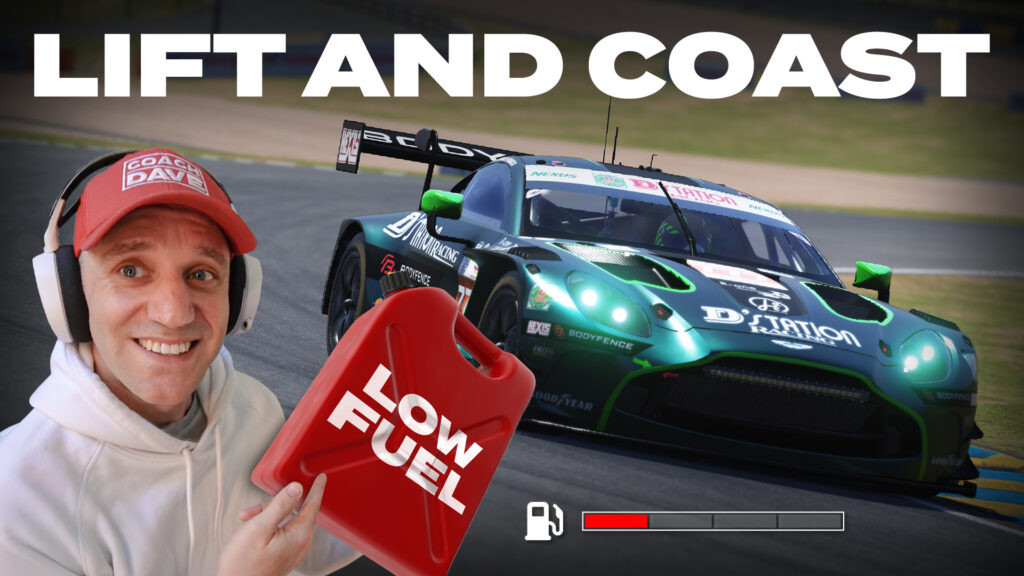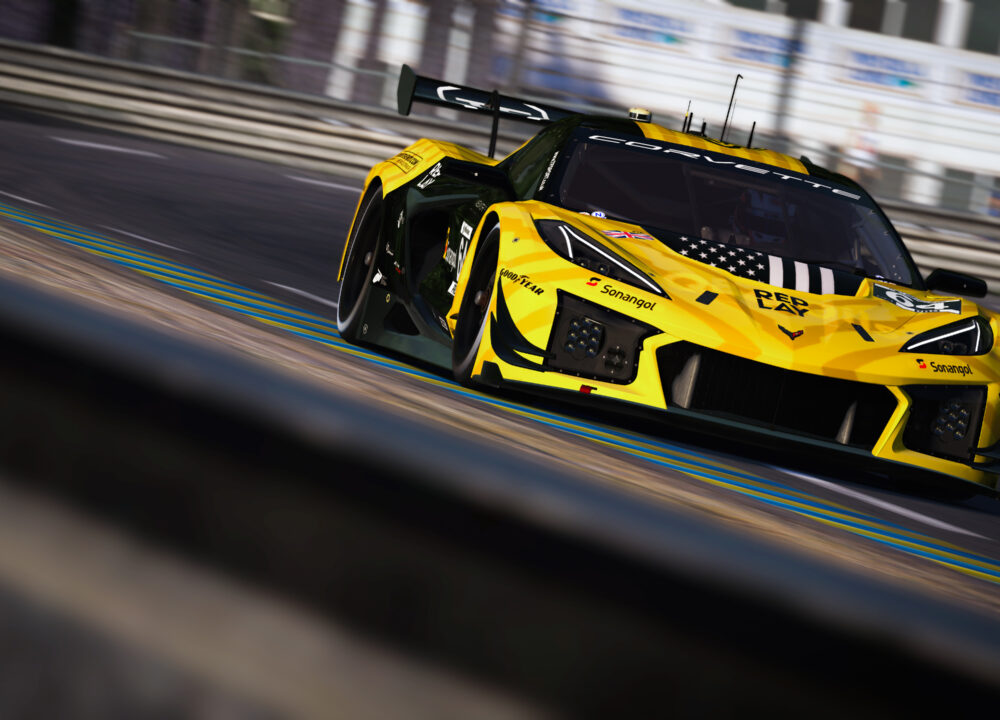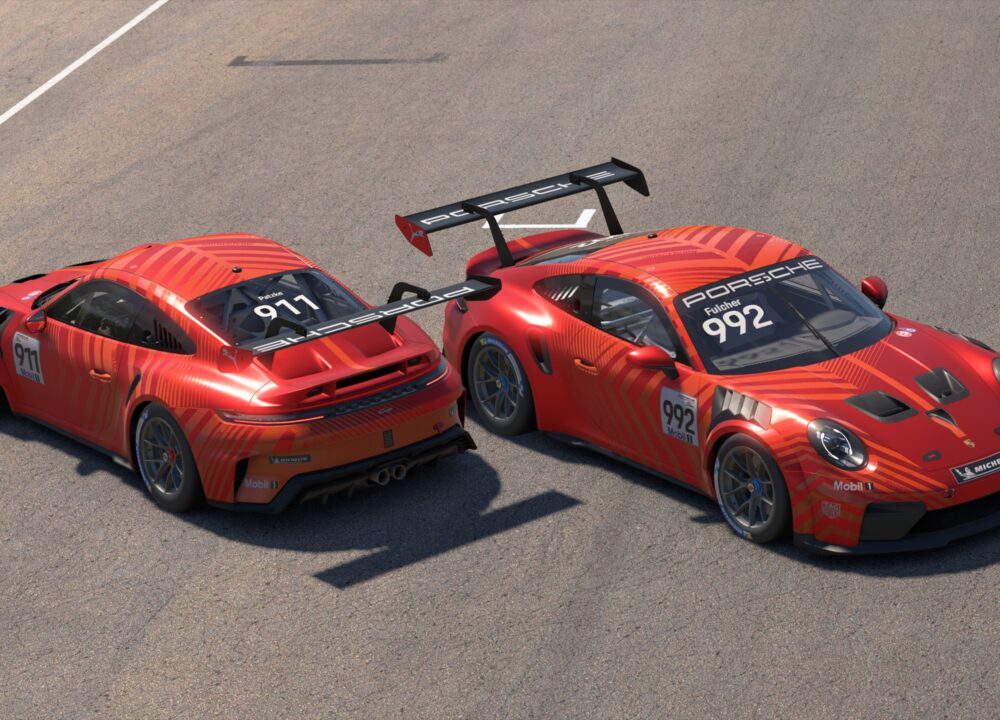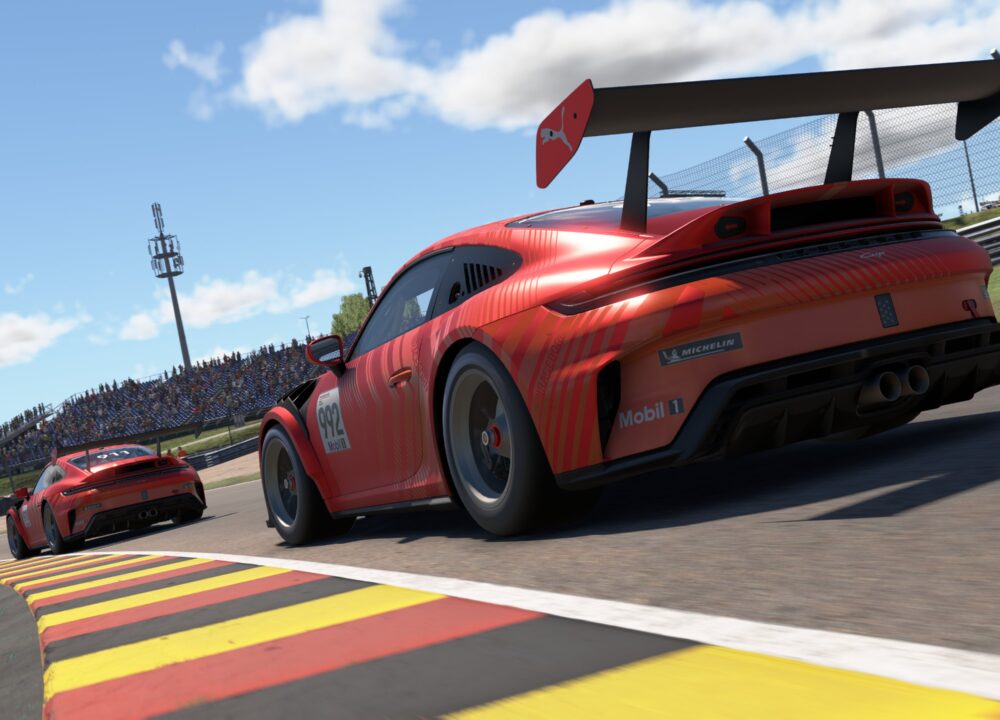When most racers think about going faster, they imagine pushing the car to its limits, flat out on the throttle, braking late, and leaving nothing on the table.
But what if we told you there’s a way to go just as fast – if not faster – while saving fuel and gaining strategic advantages over a race distance?
Coach Dave shares his real-world experience at Le Mans 2022 and breaks down how “Lift and Coast” can be the secret weapon in your sim racing toolkit.
Why Lift and Coast Works
During testing at Le Mans, Dave was struggling with car stability and pace. His engineer suggested trying lift and coast – not just to save fuel, but to open up the possibility of extending a stint by an extra lap, potentially skipping an entire pit stop.
The result? The car became more stable, easier to drive, and surprisingly, faster.
What’s Actually Happening?
When driving flat out, the weight transfer under heavy braking can destabilise the rear of the car. But when you lift off the throttle before braking, the car settles more gradually. This smoother transition keeps the platform balanced, especially in high-speed circuits like Spa and Le Mans.
How to Execute Lift and Coast Properly
Lift and Coast isn’t just a matter of lifting off the throttle randomly. It requires structure, discipline, and specific reference points. Here’s how to do it right:
1. Define Your New Reference Points
Your focus shifts from braking points to lift points. For example, instead of braking at the curb at Turn 5 in Spa, you lift at the 200-meter board and brake 10 – 20 meters later than usual. This gives you a longer coasting phase while still entering the corner at similar speeds.
2. Carry Your Normal Corner Speed
This is crucial – Lift and Coast does not mean driving slowly. Your goal is to maintain the same apex speeds while simply adjusting throttle and braking inputs.
3. Short Shift to Avoid High Revs
Fuel saving isn’t just about lift points. Revving the engine too high burns more fuel. Instead, short shift just before your car hits the yellow or red lights on the dash. The time loss is minimal, and the fuel savings are significant.
Avoid These Common Fuel-Saving Mistakes
Some habits might help with car balance, especially in sim racing, but they’re killers for fuel efficiency.
Brake and Throttle Overlap
In sim racing, it’s common to settle the car by overlapping brake and throttle inputs – especially in fast corners. But in real-world racing (and proper fuel-saving sim scenarios), this is a major no-no. Come completely off the throttle before braking.
Over-revving the Engine
It might sound and feel fast, but revving to the limiter wastes fuel. Shift early. Period.
Lift and Coast in Action: Real Lap Data
Dave ran back-to-back laps at Spa in Le Mans Ultimate – one flat out, one using lift and coast – both with full fuel and the default setup.
- Flat Out Lap: 2:22.5 – 3.45L fuel used
- Lift & Coast Lap: 2:23.2 – only 2.0L fuel used
That’s nearly 1.5L saved per lap, with only a 0.7s time loss. Throughout an endurance race, this could translate into an extra lap per stint – or skipping a pit stop entirely.
The Data Doesn’t Lie: Graphing the Gains
Telemetry showed a consistent pattern:
- Early throttle lift
- Longer coasting phase
- Later braking
- Similar apex speeds
The throttle trace for the lift and coast lap showed clear coasting zones before braking – unlike the flat-out lap where the throttle and brake inputs were back-to-back.
Bonus Tip: Using the Clutch (with Caution)
In some sim titles, pulling in the clutch during coasting removes engine drag, letting the car roll more freely. It’s a sneaky way to save even more fuel – but it’s not realistic and likely to be patched out in sims like Le Mans Ultimate.
Plus, it’s hard to master. You’ll need a button clutch or analogue hand clutch and perfect timing to avoid locking the rears or upsetting the balance.
Final Thoughts: Why It Matters
Lift and coast isn’t just a fuel-saving gimmick – it’s a proven race strategy that can help you:
- Extend your stints
- Skip unnecessary pit stops
- Maintain competitive pace
- Keep your car more stable
It takes practice and discipline to master, but once you get it right, it becomes a game-changer – especially in endurance racing or fuel-limited series.
Try it in your next race. You might just find that going “slower” makes you faster.
AI Coaching that actually works
Don't get lost in the data, instantly unlock lap time using our new real-time Auto Insights coaching. Elevate your braking, apex, and exit performance in record time.






